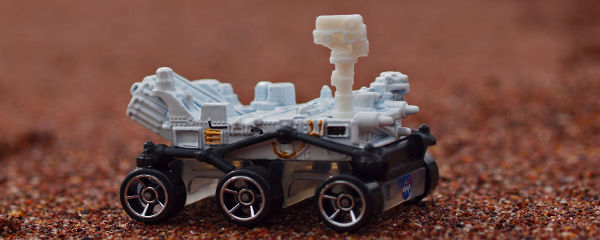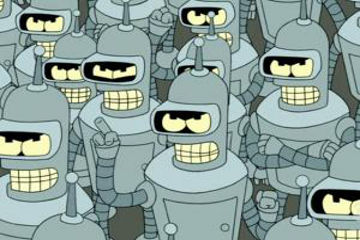What I’ve Learned:
“Turing test: where men are men, except sometimes they’re not.”
Like most computery sorts of things, Turing tests are only properly understood by a few pale geniuses who know how slide rules work and never have anything to do on Friday nights.
(Except to argue about the “proper” understanding of Turing tests. And catch up on Eureka reruns.)
But a Turing test basically boils down to one simple question:
Can a computer convince an “average interrogator” that it is human — and not, in fact, a computer?
The Turing test was first proposed by British mathematician and computer scientist Alan Turing in the 1950s. This was around the time when people first began to wonder whether machines could someday think on their own. Only nobody could precisely define what constituted “thinking”, exactly, and computers the size of post offices could scarcely rub two digits together, so the question went mostly nowhere.
That’s when Turing — now considered the father of theoretical computer science — posed his question, which was much easier to test. Whether the computer can “think” or not, can it fool people into believing it’s a live, thinking person? Turing tests come in a few flavors, but they mostly work like this:
An interrogator types questions to two test subjects — one of whom is flesh-and-blood human, while the other is motherboard-and-capacitor machine. Each answers via text — no cheating where one of the voices sounds like C-3PO or Bender — and after a few rounds, the interrogator decides which is the human. If he or she chooses the computer more than thirty percent of the time, the machine passes the Turing test.
And then Skynet probably gets built and melty-face Robert Patrick comes back in time to kill John Connor and all of human civilization will depend on Arnold Schwarzenegger saving our asses again, which seems way less likely now that he’s a member of the AARP.
Still, people perform Turing tests. Probably because they want to know when to start hoarding canned food and electromagnetic pulse bombs.
For decades, Turing tests were pretty non-apocalypse-portending. A gadget might do okay with questions limited to one subject, or when trying to pass itself off as a paranoid schizophrenic. But until recently, no computers had gotten especially close to passing a Turing test using what science would consider an average interrogator.
(In contrast to life outside science, where Siri and chatbots and Japanese girlfriend simulators have been talking people into giving away money and marriage proposals for years.
Clearly, the bar for “average interrogator” is just a leeeetle bit lower in some parts of the digital world.)
But just this week, a computer managed to pass a Turing test administered in London, fooling thirty-three percent of interrogators into believing it was a thirteen-year-old boy.
Which some might argue is only a small step up from a paranoid schizophrenic. Still — progress.
Of course, many in the artificial intelligence community don’t pay much attention to Turing tests. There are many ways to run one, and (see above) many ways in which people allow themselves to be fooled by relatively unsophisticated programs. Besides these difficulties, some computer scientists question the very relevance of Turing tests in the modern age. The goal of AI, after all, is to make machines more intelligent — not to make them more like humans.
I’ll leave it to the reader to decide how wide the chasm is between those two goals. Just remember — we created Two and a Half Men. So there is a chasm. Clearly.




